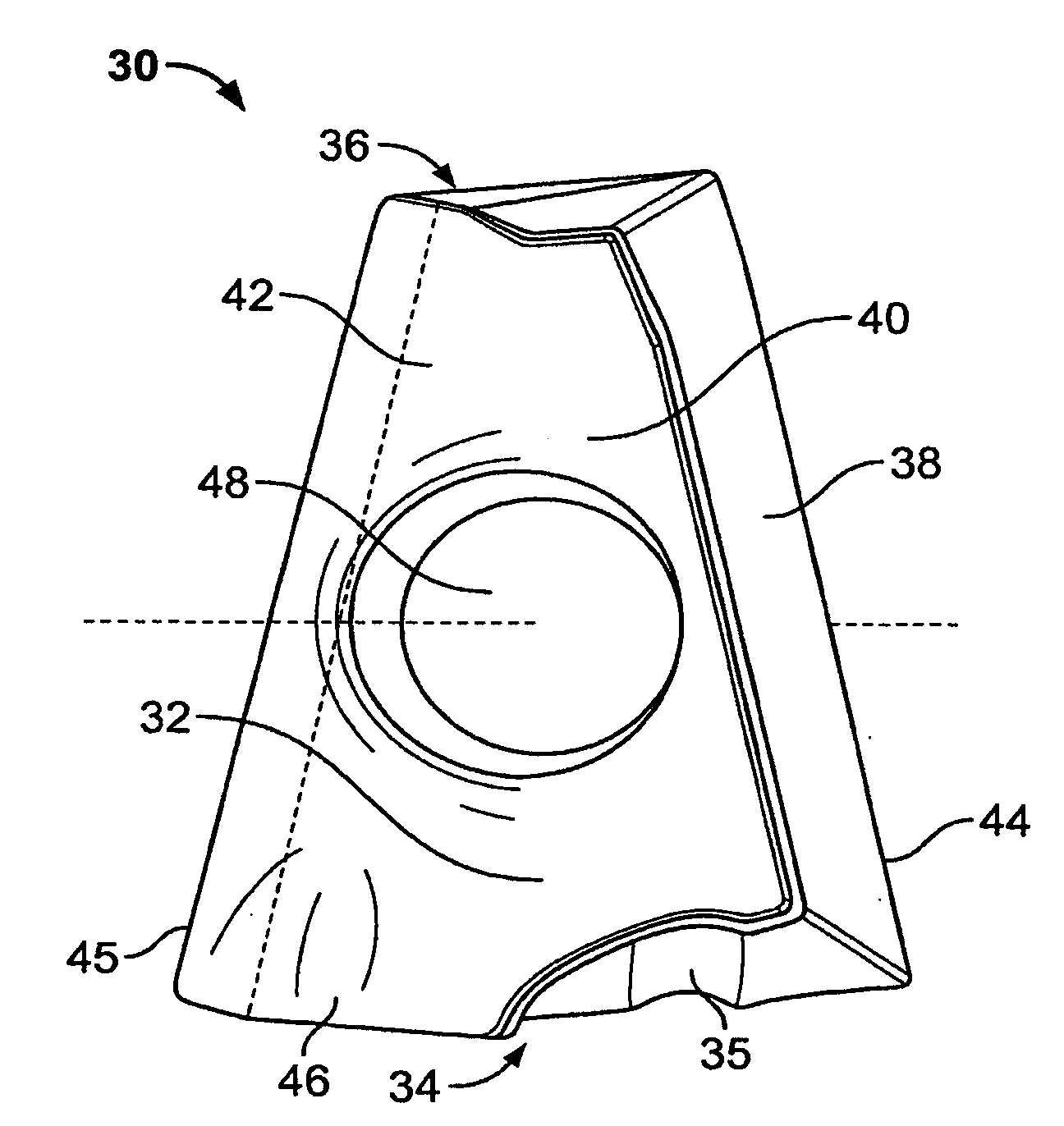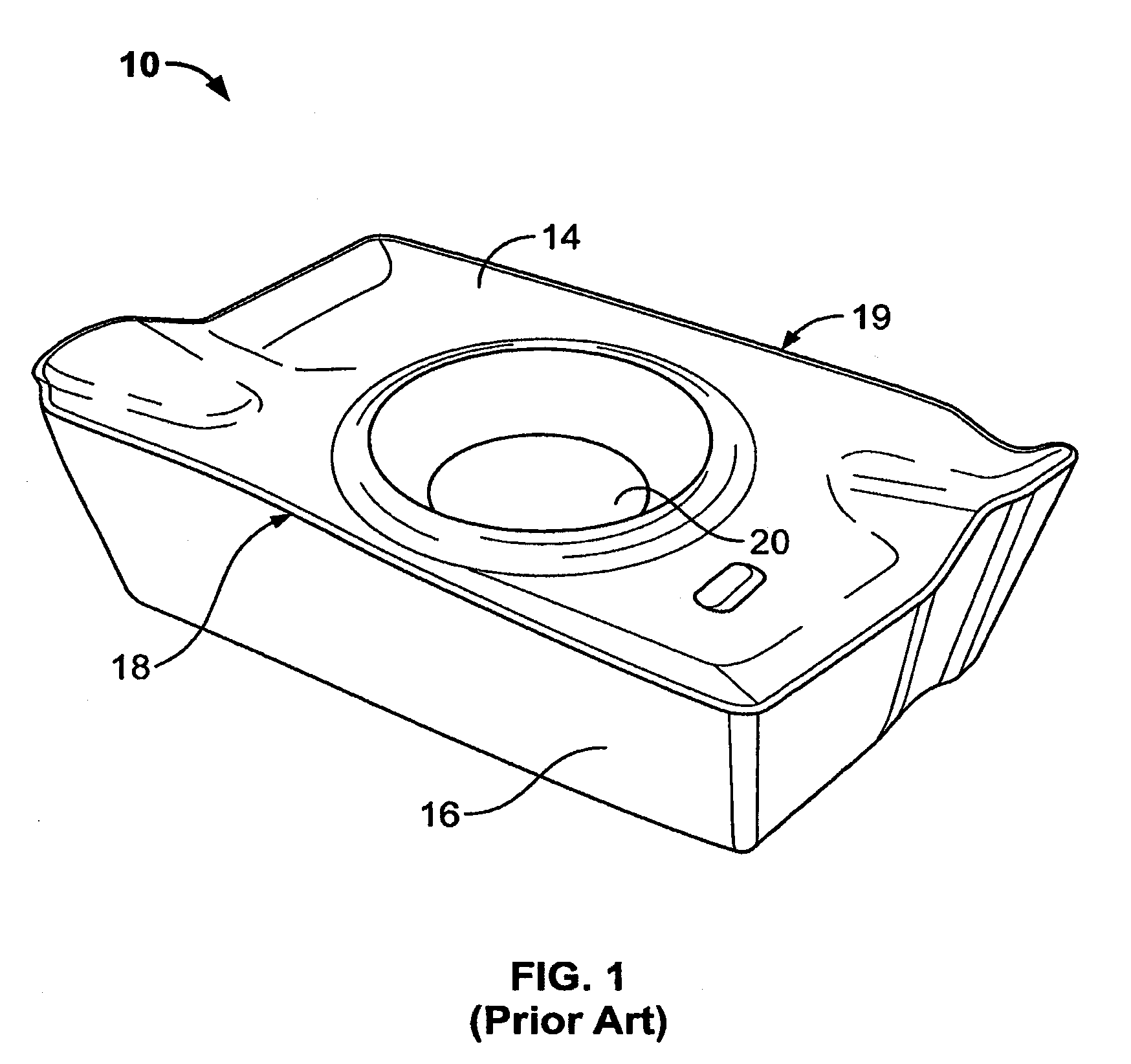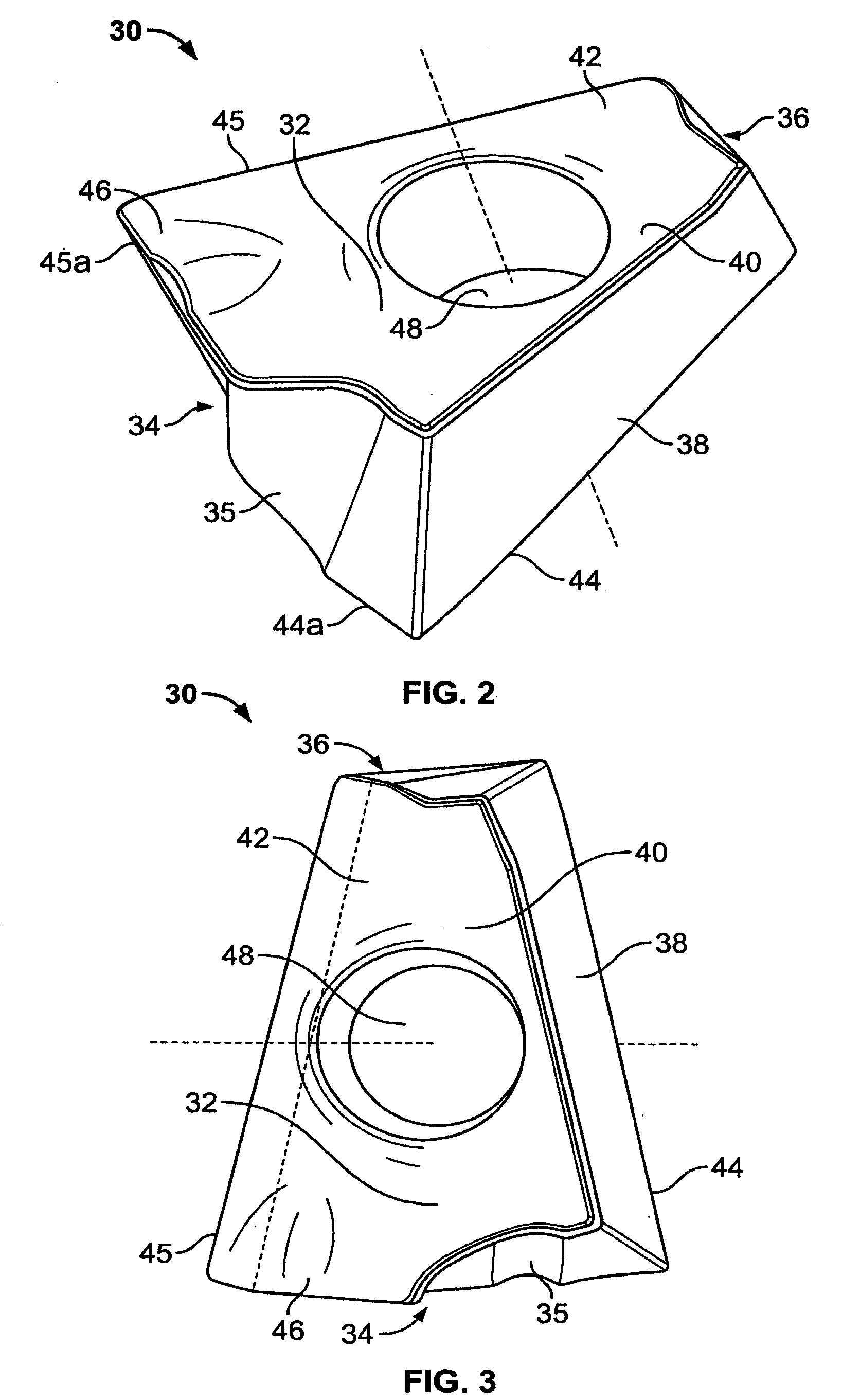Indexable Cutting Tool Insert For Cutting Tools
- Summary
- Abstract
- Description
- Claims
- Application Information
AI Technical Summary
Benefits of technology
Problems solved by technology
Method used
Image
Examples
first embodiment
[0054]FIGS. 2-5 show a cutting tool insert 30. The insert 30 is a positive geometry insert composed of a block of hard metal that acts as a suitable cutting material, such as tungsten carbide. As can be seen in FIGS. 2, 3, and 11, the insert 30 has two opposed major faces 32 and 132, which are substantially parallel to one another and substantially identical in shape and area. Each opposed major face 32 or 132 has a truncated pie shape, in which each face 32 or 132 has a broad end 34 that tapers to a narrow end 36.
[0055]As can be seen in FIGS. 2, 3, and 11, the insert 30 has first and second edge surfaces, or side seating surfaces, 38 and 39 that form the sides of the insert 30 and that diverge from the broad end 34 of the insert 30 to the narrow end 36. The first and second side seating surfaces 38 and 39 act as clearance faces for rotary cutting action during the machining process. The first and second side seating surfaces 38 and 39 are oriented such that a cross-section of the i...
second embodiment
[0063]Further, the retainer hole 48 of the second embodiment is preferably elongated, as shown in FIG. 7. The elongated shape allows a retainer to be installed through the retainer hole 48 in one of two angled, non-perpendicular orientations. The two orientations of the retainer with respect to the insert 130 allow the use of four cutting edges along the insert 130, instead of two cutting edges.
[0064]More specifically, as shown in FIG. 9, the second embodiment has a first cutting edge 44, a second cutting edge 45, a third cutting edge 144, and a fourth cutting edge 145. These cutting edges are formed by the intersection of the side seating surfaces 38 and 39 with the opposed major faces 32 and 132. When the negative geometry insert 130 is used with a cutting tool that rotates in one direction, i.e., clockwise, the insert 130 is indexable between the first and second cutting edges 44 and 45 such that one is in the active cutting position. When both the first and second cutting edges ...
third embodiment
[0081]FIGS. 16-20 show a cutting tool insert 200 for use with fixed tool applications where the cutting tool insert is held substantially fixed, such as in a lathe. The insert 200 is composed of a block body of hard metal, such as tungsten carbide, that acts as a suitable cutting material. The insert 200 may be formed into a variety of shapes, including squares, circle, hex, and parallelograms, although FIGS. 16-20 illustrate a generally diamond-shaped insert 200 suitable for use in a lathe. As seen in FIGS. 16 and 18, the cutting tool insert 200 has a lower major face 212 that is spaced from and generally parallel to an upper major face 214. The cutting tool insert 200 includes a first side wall 216 that is generally formed by side wall portions 216a, 216b extending between the upper major face 214 and lower major face 212. Similarly, a second side wall 218 is generally formed by side wall portions 218a, 218b. A first pair of side wall portions 216a, 218a taper inwardly toward each...
PUM
| Property | Measurement | Unit |
|---|---|---|
| Force | aaaaa | aaaaa |
| Angle | aaaaa | aaaaa |
Abstract
Description
Claims
Application Information
 Login to View More
Login to View More - R&D
- Intellectual Property
- Life Sciences
- Materials
- Tech Scout
- Unparalleled Data Quality
- Higher Quality Content
- 60% Fewer Hallucinations
Browse by: Latest US Patents, China's latest patents, Technical Efficacy Thesaurus, Application Domain, Technology Topic, Popular Technical Reports.
© 2025 PatSnap. All rights reserved.Legal|Privacy policy|Modern Slavery Act Transparency Statement|Sitemap|About US| Contact US: help@patsnap.com



